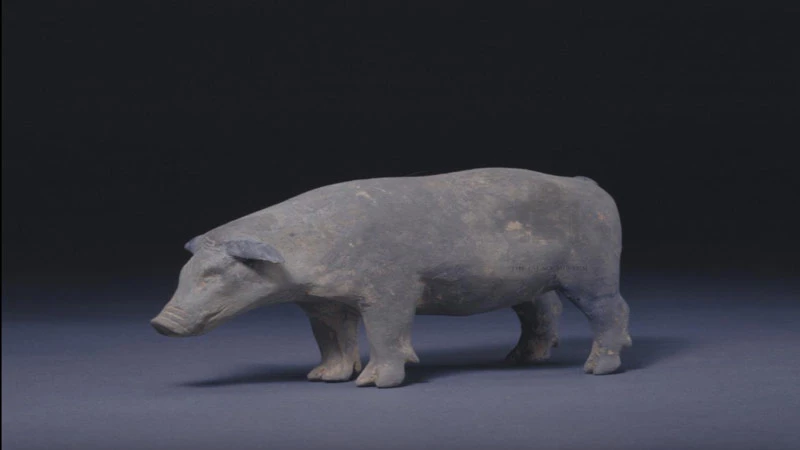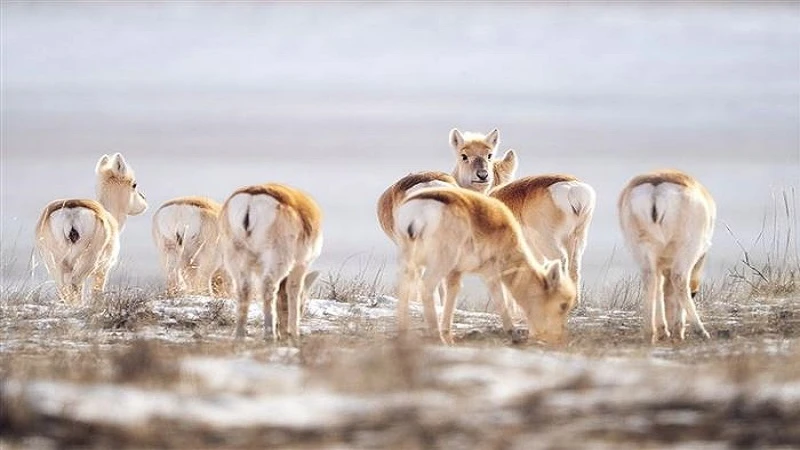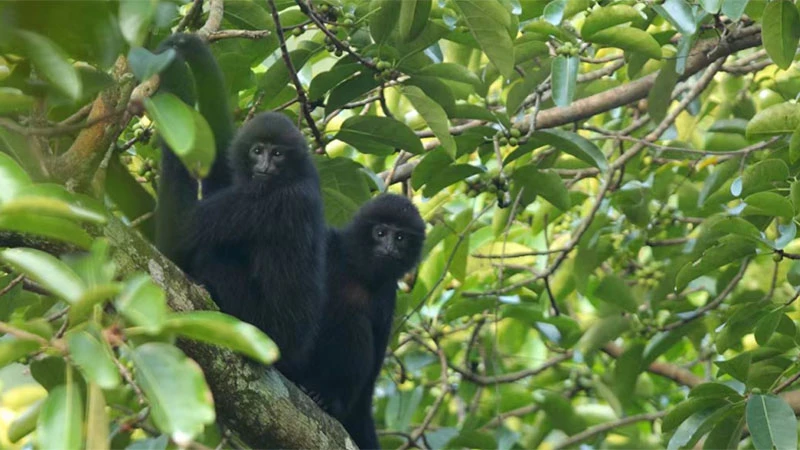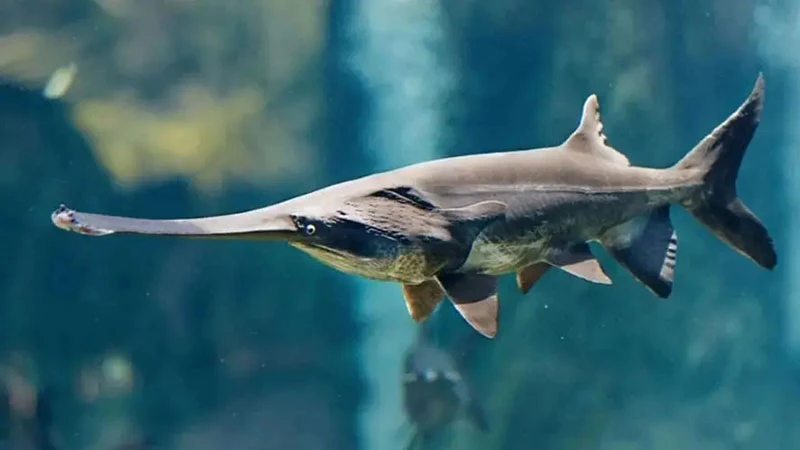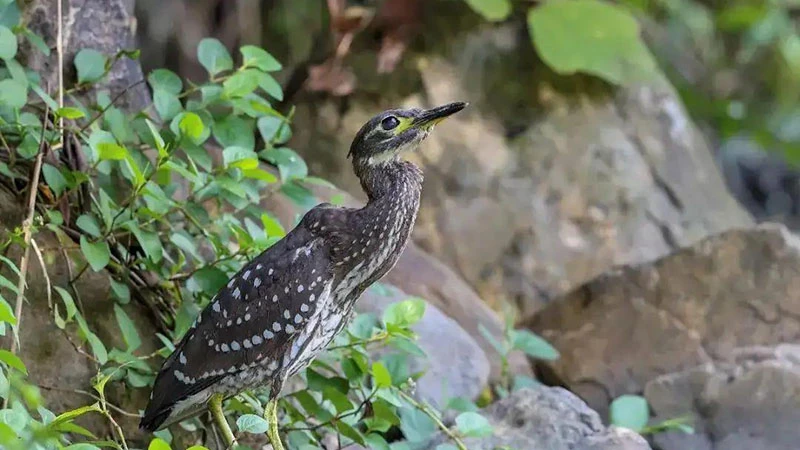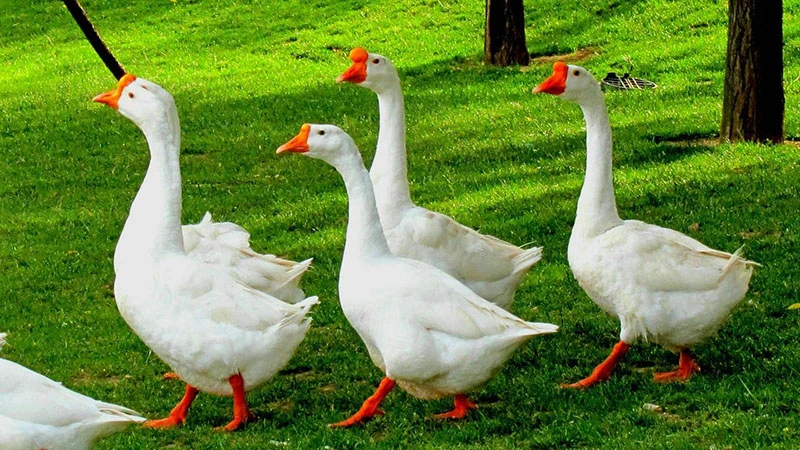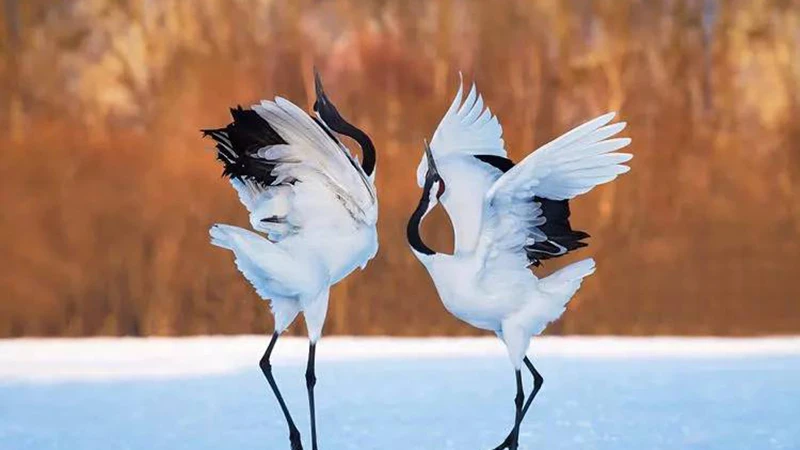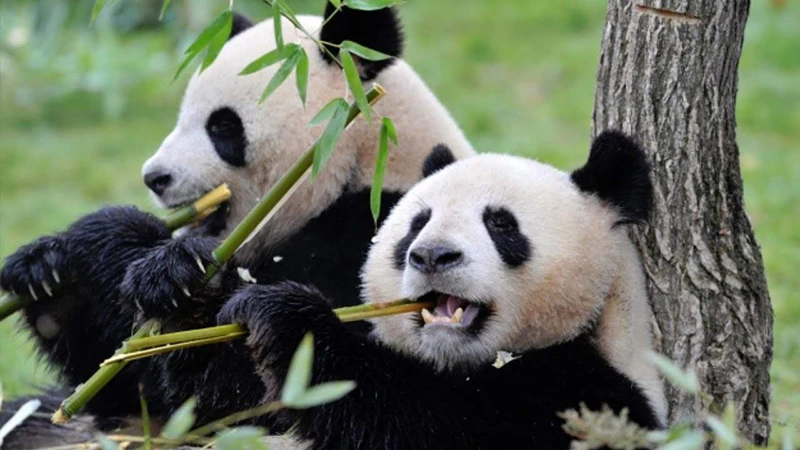-
Why Wukong Defied Becoming a Divine Mount
In the celestial hierarchy of Journey to the West (西游记), divine mounts (神骑) occupy a paradoxical role: they are both exalted and enslaved. Lions, elephants, and golden-haired beasts—once fearsome demons—are collared, neutered, and pressed into service by bodhisattvas and sages. Their domestication symbolizes Heaven's power to redeem chaos into order. Yet one figure stands apart, unbroken and unbridled: Wukong, the Monkey King. The Anatomy of a Divine Mount Heaven's stables are not filled by chance. To qualify as a mount, a creature must meet strict criteria—criteria Wukong shattered with every swing of his staff. The Biology of Submission Divine mounts are almost exclusively quadrupeds: lions, elephants, oxen, or horses. Their four-legged stance signifies stability, a biological pragmatism for carrying gods across realms. Wukong, however, is a bipedal primate—a mimic of humans who stands upright, wields tools, and laughs at gravity. His very anatomy rebels against the concept of being "ridden." In Chinese symbolism, monkeys represent the restless "heart-mind" (xinyuan), a metaphor for desires that resist control. To mount him would be to tame the untamable, a paradox even the Jade Emperor's bureaucracy couldn't resolve. The Politics of Punishment Divine mounts are not born—they are made. Take the Nine-Headed Lion, a…- 2
- 0
- 47
-
Welcomes Spring's First Migratory Birds over Ejina Banner
Migratory Birds Herald Spring in Inner Mongolia's Desert Oasis As winter's grip loosens over Inner Mongolia, the Ejina Banner in Alxa League (阿拉善盟额济纳旗) has become a stage for one of nature's most breathtaking performances: the arrival of the first migratory birds of spring. Thousands of miles from their wintering grounds, flocks of greylag geese, whooper swans, and ruddy shelducks have descended upon the thawing wetlands and lakes of this remote region, transforming its silent landscapes into a vibrant avian paradise. Among the earliest arrivals are "scouts" like the nationally protected whooper swans, their snow-white plumage glinting under the desert sun as they glide across East Juyan Lake (东居延海湿地). Nearby, at Shala Nur Reservoir, dozens of great swans perform balletic routines—dipping their necks into turquoise waters or soaring in synchronized arcs against cloudless skies. "It's like watching poetry written by the wind," says local photographer Dorji, who has documented this annual ritual for over a decade. The greylag geese, however, steal the show. Numbering in the hundreds, they create mesmerizing "bird waves"—sudden, swirling updrafts that ripple across the horizon like living storm clouds. For visitors like Shanghai-based ecotourist Liu Wei, who traveled 2,000 kilometers to witness the spectacle, the sight is…- 0
- 0
- 14
-
How Pigs Became the Skincare Stars of Ancient China
In the bustling markets of 7th-century Chang'an, Tang Dynasty elites didn't queue for imported perfumes or gold-leaf serums. Instead, they sought beauty in an unlikely source: pigs. While pork rarely graced aristocratic tables, the animal's fats, organs, and even hooves became the cornerstone of China's first documented skincare revolution. Historical records, including physician Sun Simiao's (孙思邈) precious prescriptions, reveal over 50 pig-derived beauty treatments. Collagen-rich pig hooves were boiled with herbs like white mulberry bark to create anti-aging "lightening toners." Pig pancreas, packed with natural enzymes, formed the base of exfoliating scrubs. Rendering yards worked overtime to supply pharmacies with zhū zhī (pig fat)—the Vaseline of its day—used to seal moisture into wind-chapped skin. "This wasn't folk medicine but systematized dermatology," explains Dr. Li Wen, a historian of Chinese medicine. "Sun's formulas specify exact ratios, preparation methods, and even application schedules—like modern prescription skincare." The Tang beauty regimen was meticulous. Wealthy women began their mornings with zaodou (澡豆), a grainy cleanser made from pig pancreas, pea flour, and spices. Evening routines included slathering on mianzhi (面脂), a lard-based night cream infused with jasmine or lotus. For special occasions, aristocrats applied kouzhi (口脂), a pig-fat lip balm tinted with safflower. Even…- 0
- 0
- 48
-
The Resurgence of Mongolian Gazelles
As the crisp air of early spring sweeps across the vast plains of Inner Mongolia, a breathtaking sight unfolds—herds of Mongolian gazelles, known as "huangyang" (黄羊) in Chinese, gracefully bounding across the grasslands of New Barag Right Banner in Hulunbuir. Their golden coats shimmer under the sunlight as they leap and play, embodying the untamed vitality of the wilderness. The Mongolian gazelle is a species that has long roamed the steppes of China, Mongolia, and parts of Russia. Classified as a national first-class protected animal in China and listed on the IUCN Red List, these agile creatures are integral to the fragile ecosystem of the semi-arid plains. In recent years, conservation efforts have fostered a promising resurgence in their population, a testament to the delicate balance between human activity and nature's resilience. Protecting the "Spirits of the Steppe" For centuries, the Mongolian gazelle has been revered as the "spirit of the steppe," a symbol of the untamed beauty of the grasslands. However, habitat loss and poaching once posed significant threats to their survival. In response, local authorities and conservationists have undertaken a series of robust ecological measures, ensuring a safer environment for these majestic animals. The implementation of rotational grazing…- 0
- 0
- 31
-
The Umbrella Fairy: A Journey Through Chinese Heritage
In the vibrant world of Chinese animation, The Umbrella Fairy (伞少女) has taken center stage, weaving an enchanting tale that draws audiences deep into the heart of Chinese culture. Adapted from the award-winning original comic series The Umbrella Fairy’s Dream, created by writer Zuo Xiaoling (左小翎) and artist Wei Ying (魏莹), this animated film combines traditional aesthetics with a modern narrative that resonates universally. Lauded by both domestic and international audiences, this animated film highlights China’s rich tapestry of heritage, featuring traditional artistry alongside an original storyline that connects deeply with contemporary viewers. From the moment the film begins, viewers are immersed in a mystical environment: the Cabinet of Sentiments, a repository of China’s rarest artifacts, each imbued with its own spirit, or "object soul." Through this magical cabinet, the film introduces the “umbrella spirit” Qingdai (青黛) and the “sword spirit” Wanggui (忘归), two mystical beings bound to serve and protect their historical treasures. Their bond is intense, rooted in Qingdai’s simple wish to remain with Wanggui in peace. But Wanggui’s quest for vengeance after her owner’s tragic fate pulls her out of this haven, compelling Qingdai and a young apprentice named Moyang (墨阳) to set out on an adventure…- 0
- 0
- 90
-
Isolated Giants: The Mystery of East Island's Wild Cattle
In the heart of the South China Sea, East Island, a small gem among the Xisha Islands (西沙群岛), hides a surprising secret. This 1.7 square kilometer island hosts a population of approximately 400 wild cattle—an enigma that has left scientists scratching their heads. How did such a large group of cattle arrive and survive on a remote, seemingly isolated tropical island? The mystery has lingered, drawing curious researchers into an investigation that uncovered a tale stretching back centuries. East Island, situated in the eastern part of the Xisha Islands, is bathed in tropical sunlight and receives ample rainfall year-round. Its small area, roughly 2400 meters long and 1000 meters wide, is covered in dense vegetation—ideal grazing ground for cattle, as it turns out. The vegetation is robust, consisting of hardy coastal shrubs like Scaevola and hardy silverleaf trees. To preserve this delicate ecosystem, recent efforts have introduced resilient tree species like casuarina and coconut palms, enhancing the island's greenery and providing much-needed erosion control. The flourishing flora supports a diverse animal population, with birds as the island’s primary residents. Flocks of rare seabirds, particularly white-booby birds, have made East Island their home, filling the sky and giving the island an…- 0
- 0
- 33
-
The Fearless Honey Badger: Nature’s Daredevil
In the wild, survival usually favors the strong and ferocious. Creatures with sharp claws, powerful jaws, or immense size dominate the food chain. Yet, there’s one animal that defies this logic—an animal without the physical power of lions, the ferocity of crocodiles, or the massive stature of elephants. Meet the honey badger, a creature renowned not for its size or strength, but for its unrivaled fearlessness. Despite being relatively small and lacking deadly natural weapons, the honey badger is known for its audacity to stand up against much larger predators. But what fuels this seemingly irrational bravery, and how has the honey badger carved out its place in nature’s competitive landscape? The Unassuming Yet Bold Honey Badger Belonging to the weasel family, the honey badger, or "Mellivora capensis," gets its name from its unusual fondness for raiding beehives. These animals are often found tearing through bee nests in search of honey and larvae, ignoring the angry swarm of bees that inevitably follows. With a smooth, tough hide, the honey badger seems nearly immune to bee stings, making the pursuit of honey a common activity for them. Native to regions such as Africa, parts of Asia, and India, honey badgers thrive…- 0
- 0
- 51
-
A Journey into the Lives of the Black-Crowned Gibbons
The Guardians of Wuliang Mountain (无量山) On October 24, in celebration of International Gibbon Day, a unique event unfolded at the Wuliang Mountain-Ailao Mountain (哀牢山) National Nature Reserve in Yunnan Province. The Jingdong (景东) Management Bureau welcomed a group of special guests: the firefighters from the Jingdong squad of the Pu’er City (普洱市) Forest Brigade. This visit marked the beginning of an enlightening expedition focused on the endangered black-crowned gibbon, aimed at deepening their understanding of this incredible species while fostering a commitment to protecting the local ecosystem. Discovering Biodiversity in the Reserve The adventure began at the specimen exhibition hall, where the firefighters, led by Tian Yinglan (田应兰), the head of the community education department at the Jingdong Management Bureau, embarked on a guided tour. The exhibit featured a variety of specimens, each telling its own story about the rich ecology of Wuliang Mountain. From the armored pangolins to the agile Indochinese gray langurs, and from the robust Chinese goral to the swift white pheasants, every displayed animal captured the diversity and fragility of their shared habitat. Among the exhibits, a particularly striking specimen caught everyone’s attention: a black-crowned gibbon. Director Luo Youyong (罗有勇) of the Jingdong Management Bureau…- 0
- 0
- 39
-
A Unique Ecosystem of Snake Island
When we think of nature reserves, we often imagine vast expanses dedicated to the protection of diverse wildlife, rich with biodiversity. Countries worldwide have established these sanctuaries to ensure the survival of endangered species, like the rare Pacific green turtles thriving in Costa Rica’s Ostional Wildlife Refuge or the elusive Chinese giant salamanders in Zhangjiajie, Hunan. These reserves create safe havens where creatures can thrive, shielded from the threats of habitat destruction and poaching. However, one reserve stands apart from the rest—Dalian’s Snake Island, a peculiar microcosm where the preservation of life has taken an unusual turn. Instead of a bustling biodiversity hotspot, Snake Island has become a domain for a singular species—the black-browed viper. Here, nature’s balance seems to have tipped in an unexpected direction, leading to an explosion in the population of these serpents. The Proliferation of the Black-Browed Viper Covering just 1.2 square kilometers, Snake Island may not seem like much, but it serves as an ideal habitat for the black-browed viper, a species known for its cold tolerance and potent venom. This small island has transformed into a bustling metropolis for vipers, boasting an astonishing population density of over 20,000 individuals, all of the same species.…- 0
- 0
- 34
-
The Extinction of the Yangtze White Sturgeon
Once revered as the "King of Freshwater Fish" and an emblem of China's rich aquatic biodiversity, the Yangtze white sturgeon’s disappearance raises pressing questions about the future of conservation efforts and the methods we employ to safeguard our natural heritage. But what exactly does extinction mean in this context? Extinction refers to the complete absence of living members of a species in its natural habitat as well as in controlled breeding environments. In contrast, a species can be declared extinct in the wild if individuals exist only in captivity or controlled settings, highlighting the importance of preserving habitats and maintaining biodiversity. The Causes Behind the Disappearance The tale of the Yangtze white sturgeon is one marked by warning signs, many of which have been overlooked. Historically abundant in the Yangtze River, this fish was not only a significant part of the local ecosystem but also a staple for fishermen. However, a combination of factors—overfishing, habitat destruction, and pollution—led to its gradual decline. Research indicates that the sturgeon population was still relatively stable in the 1970s, with catches reaching up to 25 tons per year. The turning point came in the early 1980s, when significant environmental changes began to affect the…- 0
- 0
- 69
-
The Mysterious Birds of Ailao Mountain
Deep in the heart of Yunnan Province, China, lies Ailao Mountain (哀牢山), a place of remarkable biodiversity and mysterious landscapes. Recently, this mountain range has become the focal point of conservation efforts after the discovery of one of the world’s rarest birds, the white-eared night-heron. With fewer than 1,000 individuals remaining in the wild, this bird’s sighting in Ailao Mountain has sparked global interest and heightened awareness of the need to protect endangered species. Ailao Mountain: A Biodiversity Hotspot While the Ailao Mountain range may not be widely known, it is a crucial migration corridor for many bird species. Spanning nearly 500 kilometers, it connects the eastern and western halves of Yunnan, providing a critical pathway for over 200 species of migratory birds. These birds cross the mountain every year, making it a key point for birdwatchers and researchers like Zhao Xuebing (赵雪冰), a prominent ornithologist and conservationist. For Zhao, Ailao Mountain is not just a place of work, but a treasure trove of ecological diversity. Over the last two decades, he and his team have been studying the nocturnal migration patterns of birds in this area, using banding techniques to track their movements. Their research has yielded vital data…- 0
- 0
- 28
-
A Small Cat with Big Ambitions
Nature is an unforgiving arena, where survival hinges on adaptability and resilience. While many think of large and powerful animals when discussing predators, not all creatures conform to this stereotype. In the wild, there's one small but fierce animal that has mastered the art of survival. Despite its modest size, it can hunt down even fearsome animals like wolves. This remarkable predator is none other than the lynx. The lynx belongs to the feline family, a species often overshadowed by its larger cousins like tigers and lions. However, the lynx, standing at about one meter long and weighing around 20 to 30 kilograms, is a force to be reckoned with. Covered in thick fur, it is well-equipped to handle cold mountain environments, and its muscular frame allows it to navigate rocky terrains with ease. Nicknamed the "wolf cat," this animal has earned a reputation as a relentless hunter. Despite its endangered status and protection as a second-class species in China, the lynx's stealth and hunting prowess have made it one of the top predators in its native regions. But what really sets the lynx apart is its ability to hunt in places where many predators would struggle—on snow-covered mountains and…- 0
- 0
- 24
-
The Goose vs. Snake Showdown
The belief that keeping a few geese can effectively ward off snakes has been a long-standing notion in rural folklore. Known for their aggressive demeanor, geese are often seen as fearless protectors, capable of scaring away even the most dangerous intruders, including venomous snakes. But how much truth is there to this? Can geese truly defend against snake threats, or is it just a myth passed down through generations? The Origin of the Snake-Fearing Goose Myth There are several popular explanations for why people believe geese can keep snakes at bay. One of the most widely accepted reasons is the notion that goose droppings contain sulfur-like compounds. These chemicals supposedly harm snakes, causing their skin to rot or forcing them into an aggressive shedding cycle, which weakens their survival ability. According to this theory, snakes instinctively avoid areas where geese reside to protect themselves from these harmful effects. Another reason often cited is the aggressive nature of geese. They are known to have a strong territorial instinct and will attack anything they perceive as a threat. A snake, even with its deadly venom, may be no match for the sharp beak of an angry goose, especially since a well-placed strike…- 0
- 0
- 99
-
The Gentle Guardians: A Guide to Pet Turtles
Understanding the Appeal of Pet Turtles When considering a pet, many individuals envision a playful dog or a cuddly cat. However, turtles present a unique alternative for those seeking a quiet, low-maintenance companion. Often described as calm and resilient creatures, turtles require minimal day-to-day attention compared to traditional pets. Their fascinating nature can offer not just companionship but also a sense of tranquility. Yet, to ensure the health and happiness of these shelled friends, potential turtle owners must invest time in understanding their specific care requirements. Choosing the Right Turtle for You The first step in turtle ownership is identifying which type of turtle suits your lifestyle. Turtles generally fall into two categories: aquatic and semi-aquatic. Aquatic turtles thrive in water environments, necessitating a sizable tank equipped with a basking area—often a large rock or platform where they can rest and soak up some sun. Among the most popular pet turtles is the red-eared slider, scientifically known as Trachemys scripta elegans. Easily recognized by the distinctive red stripe behind its eyes, this species has become a staple in many households. Known for its adaptability and strong survival instincts, the red-eared slider enjoys a varied diet and is relatively easy to…- 0
- 0
- 27
-
Yancheng's Wings: A World Heritage Haven
A Symphony of Seasons: The Enchanting Wetlands of Yancheng (盐城) As the winter season unfolds over the Yellow Sea wetlands (黄海湿地) , a tapestry of golden hues emerges from the lush aquatic grasses. Reeds, canes, and sedges transform into a sea of rippling gold, reminiscent of wheat waves from a bird's-eye view. For Lu Shicheng (吕士成), a renowned ornithologist in Yancheng, Jiangsu Province, the autumn and winter months are more than just a change of seasons; they are a celebration of nature's bounty and a testament to the returning avian visitors that he holds dear. Lu Shicheng, the director of the Bird Research Center at the Yancheng Wetland Rare Bird National Nature Reserve, finds his heart swelling with pride as he watches the birds return for the winter. His affection for the season is not just for the scenic beauty but for the birds that grace the skies of Yancheng. "Autumn and winter are my favorites, followed by summer and spring," he shares. "The return of the birds, especially the ones I cherish, is a sight that fills me with joy." The Balancing Act: Economy vs. Ecology The journey to World Heritage status began in 2014 with a series of…- 0
- 0
- 40
-
The Past Forty Years of Panda Conservation
Forty years have passed since the giant panda population hit an all-time low, and the global community of panda experts has been tirelessly working towards a singular goal: to cultivate a self-sustaining population that can thrive in the wild, ensuring a secure future for this wild species. However, two significant obstacles have hindered research into allowing these animals to maintain their numbers independently: a lack of collaborative efforts among various institutions and a disregard for the breeding advice of genetic scientists. Particularly in China, the native home of the panda, breeders have often prioritized the quantity of cubs over their quality, with the funding of competing departments being directly tied to the number of cubs they produce. The Hidden Costs of Human Intervention A long-standing concern has been the health and behavioral issues that arise in captive pandas due to improper breeding methods. These issues not only complicate the breeding process but also make it more challenging for pandas to adapt to the wild. Our recent publication in Scientific Reports adds to the growing body of evidence that human interference in breeding can be detrimental to the animals. In China, where the giant panda conservation efforts are most concentrated, it…- 0
- 0
- 31
-
How Monkeys Turned a Village into a Thriving Eco-Tourism Destination
In the verdant valleys of Jiulong Village (久隆村), nestled within the lush landscapes of Fengshan County (凤山县), Hechi City (河池市), a remarkable transformation has taken place. For the elder residents, the sight of the once-barren hills surrounding Bala Mountain (巴腊山) was a stark reminder of the environmental devastation that had occurred in the 20th century. Three catastrophic events had left the area devoid of life, and with it, the local "inhabitants"—the wild macaques—had vanished without a trace. Fast forward to the present, and a heartwarming story unfolds. The macaques, once thought to be gone forever, have made a triumphant return, thanks to the villagers' dedication to ecological restoration. The once desolate hills are now alive with the chatter and playful antics of these primates, and the villagers have found a way to turn this ecological revival into a thriving eco-tourism industry. A Forest's Revival and the Macaques' Homecoming The Bala Mountain, once a silent witness to environmental neglect, is now a haven for the macaques. The villagers, under the guidance of the local party member and environmental advocate, Luo Qiyue (罗起跃), embarked on a journey of reforestation and ecological conservation in 1996. Their efforts have paid off, with over 25,000…- 0
- 0
- 27
-
The Growing Potential of Alpaca Farming in China
Alpaca farming has emerged as a unique and profitable venture in China's growing agricultural landscape. With a focus on niche markets and premium products, this industry has garnered attention for its multifaceted revenue streams. In regions such as Inner Mongolia’s Xilingol League (内蒙古锡林郭勒盟), farmers like Chi Haitao (迟海涛) have transformed alpaca breeding into a thriving business, bringing significant economic benefits to local communities. The rising interest in alpacas is not just limited to their appeal as adorable animals but extends to their high-value contributions in wool, meat, and tourism markets. A Lucrative Wool Industry One of the primary revenue sources for alpaca farmers is their high-quality wool. Alpaca wool is renowned for its softness, elasticity, and natural sheen, making it a premium material in the global textile market. Unlike sheep wool, alpaca fibers are free of lanolin, which makes them hypoallergenic and more environmentally friendly. Each alpaca can produce between 3 to 5 kilograms of wool annually, and the wool’s market value can range from $50 to $268 per kilogram, depending on the quality. This high demand for alpaca wool places the industry at the forefront of sustainable and luxurious textiles. In particular, alpaca wool’s tensile strength is nearly double…- 0
- 0
- 86
-
Panda: Saving a Species Beyond Adorable Appeal
The Panda’s Evolutionary Success Pandas are undeniably charming, but is adorability a sufficient reason to invest substantial resources in their conservation? Are they doomed to extinction, or are we merely squandering resources on their behalf? To address these questions, it is essential to dispel three common myths about pandas. Myth 1: Pandas Are Evolution’s Dead End Some argue that giant pandas are evolutionary failures because they subsist on bamboo, a low-nutrition, hard-to-digest plant. Bamboo, essentially a form of woody grass, consists of over 90% lignin and cellulose, making it tough and nutritionally poor. This dietary choice might seem like a dead end, but it's crucial to understand the context of this adaptation. Pandas once had a diet more aligned with carnivorous ancestors, but a genetic mutation (Tas1r1 pseudogenization) around 4.2 million years ago made them lose their ability to taste meat. This shift to bamboo, though seemingly impractical, was a strategic move. Bamboo’s abundance and the pandas' ability to evade predators in dense bamboo forests allowed them to exploit a niche with minimal competition. Despite their reliance on bamboo, pandas possess remarkable evolutionary traits to survive on this diet. Their "pseudo-thumb," an evolved wrist bone, enables them to grasp and…- 0
- 0
- 22


